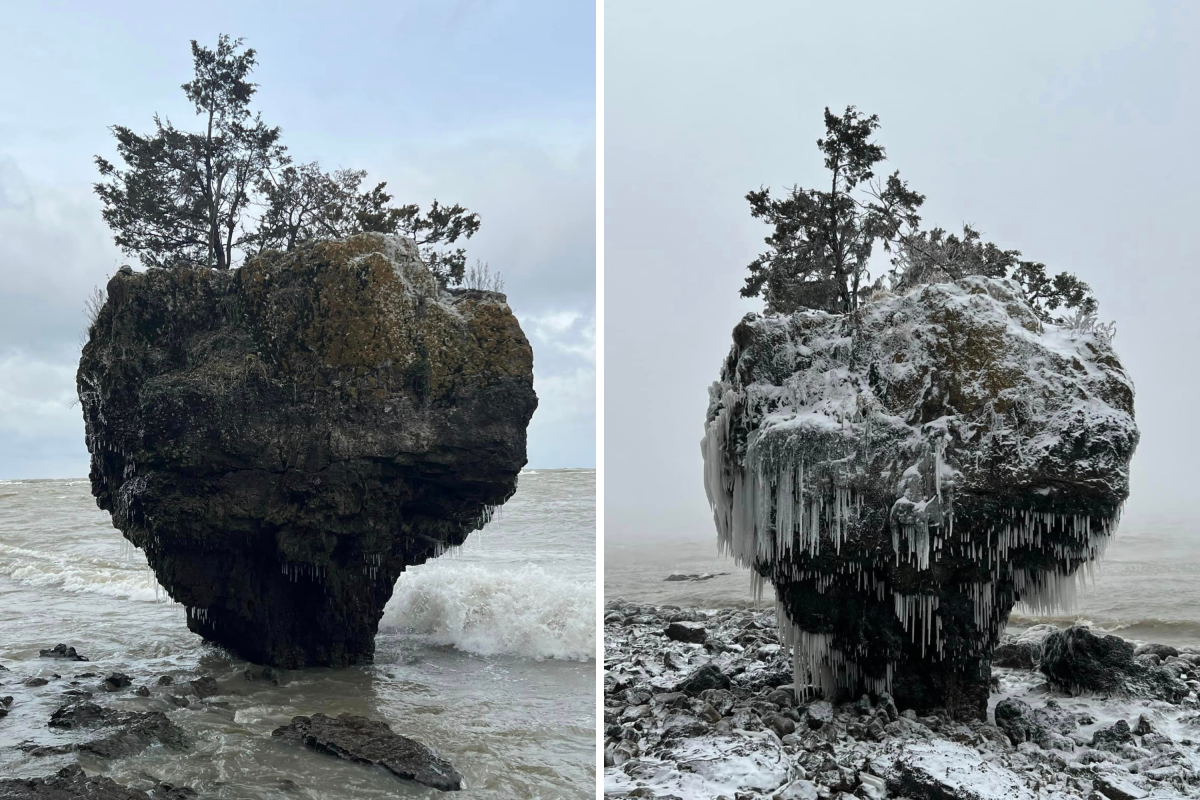Rare photos have been captured of huge boulders that are usually at the bottom of Lake Erie following an intense winter storm that battered Ohio.
The storm with 65 mile-per-hour winds hit northeast and north-central areas of the state on Saturday, the weather service reported. Winds this strong can push back the waters of the lake, revealing these structures.
Lake Erie is one of the five Great Lakes, and fourth-largest by surface area. Occasionally, when the winter is severe enough, its water causes a rare phenomenon.
Pictures captured by local resident Barry Koehler show huge boulders revealed amid the low shoreline, near Put-in-Bay on South Bass Island and Port Clinton.

Koehler told Fox 8 News that as he went out in the freezing cold to capture the photographs, he felt like he was "walking on a different planet."
"It was so exciting to see Lake Erie like that, it was like exploring a whole new world," Koehler told the news outlet.

Lake Erie is susceptible to this phenomenon, which is known as a seiche. It occurs when strong winds and pressure changes cause the water to move from one end of the lake to the other. The water will continue to oscillate back and forth like this for hours and sometimes days, according to the National Oceanic and Atmospheric Administration.
NOAA likens the effect, on a smaller scale, to water sloshing back and forth in a swimming pool, bathtub, or a cup of water.
Koehler told Fox 8 News that these boulders are usually concealed under 6 to 9 foot of water. This is not the first time he has snapped these boulders. He also snapped some photos in 2022, when the same boulders were visible.
The shoreline was so far back on Saturday that some people were even walking on the bottom of the lake bed, the news outlet reported.
"It's not something you see often, twice in the last 13 months is rare, but when the lake bed is exposed due to wild winds from the southwest like on Saturday it's thrilling," Koehler told the news outlet.
The NOAA Great Lakes Environmental Research Laboratory had already warned on X, formerly Twitter, that winds can cause "major water level changes" across the lake, before the storm hit.
Wind can cause more than just waves on the #GreatLakes, especially when it comes to #LakeErie. Strong winds moving SW-NE can cause major water level changes across this lake. This Saturday, predicted water level in Buffalo is 12 feet higher than in Toledo! https://t.co/LCiuHzZMFX pic.twitter.com/ISxlvaawcQ
— NOAA Great Lakes Environmental Research Laboratory (@NOAA_GLERL) January 11, 2024
In the past, seiches have been so strong in Lake Erie that waves of 12 to 16 feet caused flooding near Buffalo, New York, the weather service reports.
This usually only occurs when winds reach a strength of 74 mph, which is the strength of gales during a hurricane. No flooding was caused in this most recent seiche, but video footage also taken by Koehler and posted to Facebook showed strong waves sloshing against the shoreline.
By now, it is expected the Lake Erie has already leveled out, meaning these boulders may already be submerged once again for another year, Cleveland.com reported.
Do you have a tip on a science story that Newsweek should be covering? Do you have a question about lake Erie? Let us know via science@newsweek.com.

About the writer
Robyn White is a Newsweek Nature Reporter based in London, UK. Her focus is reporting on wildlife, science and the ... Read more
To read how Newsweek uses AI as a newsroom tool, Click here.



